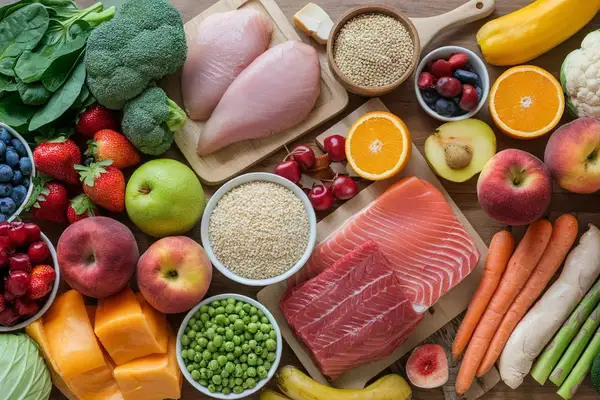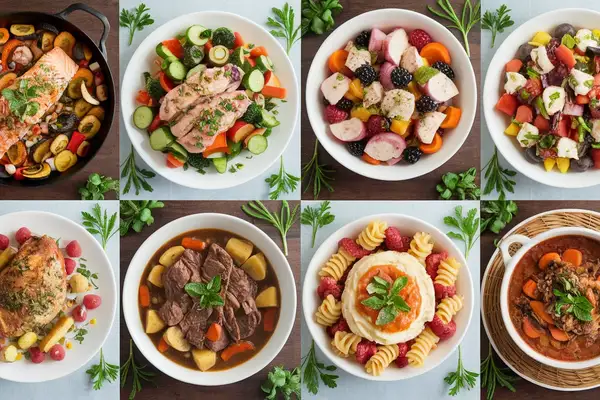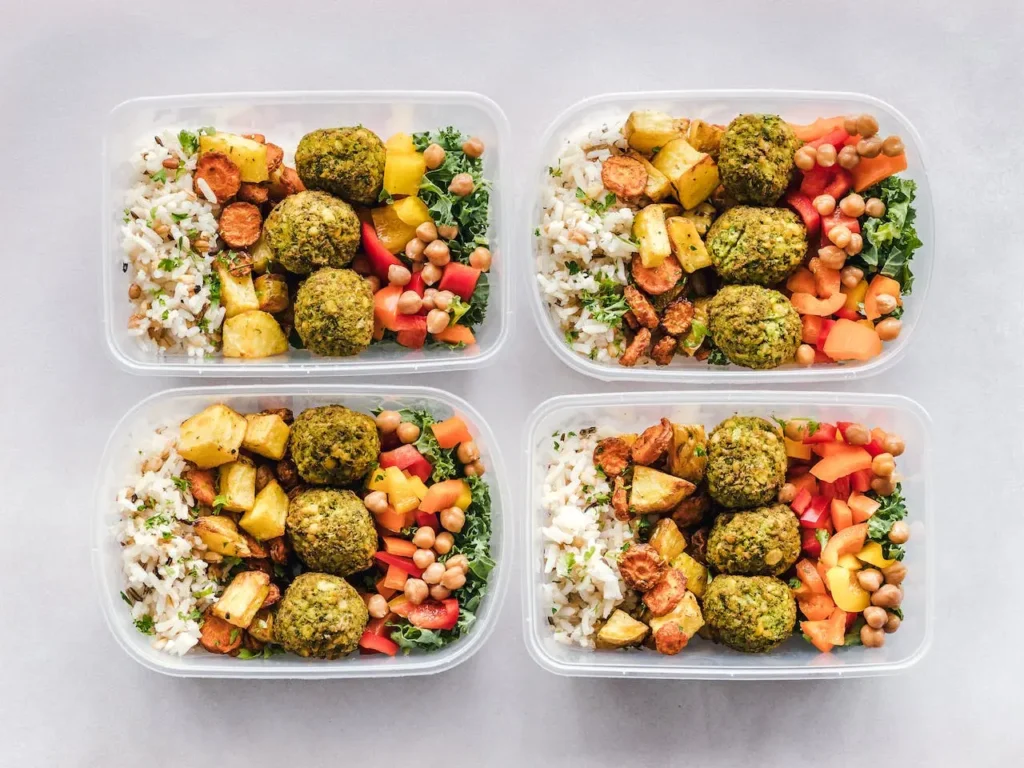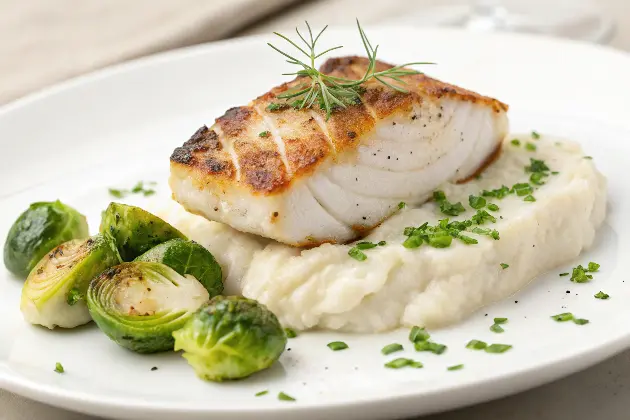5 Foods to Avoid with Trulicity: Diet Guide for Better Health
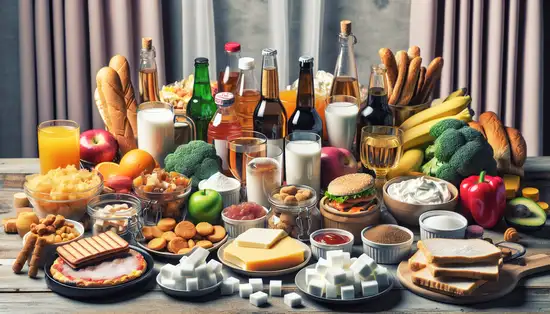
This post may contain affiliate links, meaning I may earn a commission if you make a purchase, at no extra cost to you. I only recommend products I trust. Thank you for your support.
Trulicity also known as dulaglutide is a once-weekly injectable medication that plays a pivotal role in the management of type 2 diabetes by improving blood sugar levels and reducing the risk of serious cardiovascular events when combined with diet and exercise.
Its effectiveness hinges not only on the medication but also on a balanced diet, involving steering clear of certain foods that can counteract the medication’s benefits.
This article explores a comprehensive trulicity diet with a list of foods to avoid with trulicity, what drinks to avoid with Trulicity, and provides the best foods to eat with trulicity.
Foods to Avoid With Trulicity
When taking Trulicity, it’s important to be mindful of certain foods that may affect its efficacy and hinder the medication’s positive effects.
Here are some recommendations of what foods to avoid with Trulicity:
1. Saturated and Trans Fats
These fats can exacerbate nausea and other gastrointestinal issues. They are also linked to higher cholesterol levels and increased cardiovascular risk.
- Butter
- Whole milk
- Ice cream
- Coconut oils
- Palm oils
- Shortening
- Margarine
- Burgers
- Steak
2. Sugary Foods
It’s crucial to limit or avoid these sugary foods, as sugar quickly spikes blood sugar levels, potentially interfering with Trulicity’s ability to maintain glycemic control.
- Candy (e.g., gummy bears, chocolate bars, hard candies)
- Pastries (e.g., croissants, danishes, cinnamon rolls)
- Sweetened breakfast cereals
- Sugary drinks (e.g., soda, fruit punch, sweetened iced tea)
- Ice cream
- Milkshakes
- Frozen desserts
- Honey
- Cookies, cakes, and other baked goods
3. Refined Carbohydrates
Refined grains and carbohydrates are included in the foods to avoid with Trulicity because of their high glycemic index (GI), which can significantly impact blood sugar levels.
- White bread
- White rice
- Traditional spaghetti
- Fettuccine
- Penne
- Rigatoni
- Farfalle (bowtie pasta)
- Elbow macaroni
- Frosted Flakes
- Froot Loops
- Cocoa Puffs
- Lucky Charms
- Honey Nut Cheerios
- Cap’n Crunch
- Snack foods like pretzels and crackers
4. Fried and Greasy Foods
These are among some of the foods to avoid with Trulicity as they often contain high levels of saturated and trans fats, which can exacerbate gastrointestinal side effects such as nausea and upset stomach.
- French fries
- Onion rings
- Fried chicken
- Potato chips
- Mozzarella sticks
- Fried fish
- Doughnuts
- Spring rolls
- Fried calamari
- Fried cheese curds
5. Foods High in Sodium
Individuals taking Trulicity, especially those with existing heart conditions should opt for low sodium meals to avoid the risk of developing further cardiovascular complications.
- Bacon
- Sausage
- Deli meats
- Beef jerky
- Canned soups and broths
- Salty snacks such as chips and salted nuts
- Canned vegetables
- Fast food and processed convenience foods like frozen dinners and packaged mixes

What Drinks to Avoid With Trulicity
When taking Trulicity, it’s important to be mindful of your beverage choices.
Here are some of the drinks to avoid or limit in a trulicity diet:
1. Alcohol
- Drinking alcohol while on Trulicity can further lower blood sugar levels, potentially leading to hypoglycemia.
- It can also increase the risk of pancreatitis, a serious side effect associated with Trulicity.
- The general recommendation is to limit alcohol intake to one drink per day for women and two drinks per day for men.
- One drink is defined as 5 oz of wine, 12 oz of beer, or 1.5 oz of distilled spirits.
2. Sugary beverages
Avoid high-sugar drinks as these can spike blood sugar levels and counteract the effects of Trulicity.
- Sodas
- Sweetened juices
- Energy drinks
- Sweetened iced tea
3. Drinks high in caffeine
Excessive consumption of these caffeinated beverages can potentially contribute to dehydration and may exacerbate certain side effects such as fatigue.
- Coffee (1 cup contains about 95 mg of caffeine)
- Black tea (1 cup contains about 47 mg of caffeine)
- Espresso (1 cup contains about 65 mg of caffeine)
- Cacao chocolate (1 oz of dark chocolate contains about 24 mg of caffeine)
- Caffeine supplements (These contain about 200 mg of caffeine per tablet)
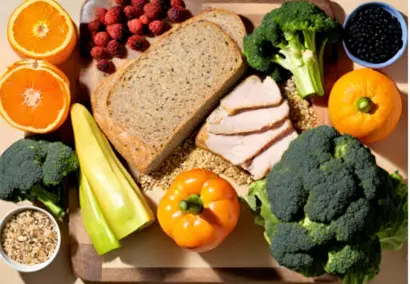
Best Foods to Eat With Trulicity
The best foods to eat with Trulicity should contain a balanced diet of lean proteins, low-carbohydrate, and low glycemic index foods to keep blood sugar levels in check.
Here are some of the best foods to eat with Trulicity:
1. High-Fiber Foods
- Vegetables: Leafy greens, broccoli, cauliflower, carrots, and bell peppers.
- Fruits: Berries, apples, pears, and oranges.
- Whole grains: Oats, quinoa, brown rice, and whole grain bread.
2. Lean Proteins
- Skinless poultry: Chicken and turkey.
- Fish: Salmon, trout, and tuna.
- Legumes: Lentils, chickpeas, and black beans.
- Tofu and tempeh: Plant-based protein sources.
3. Healthy Fats
- Avocados
- Nuts and seeds: Almonds, walnuts, chia seeds, and flaxseeds.
- Olive oil: Extra virgin olive oil for cooking and salads.
4. Dairy Alternatives
- Greek yogurt: Low-fat or non-fat options.
- Unsweetened almond milk or soy milk
5. Other Trulicity Diet Considerations
- Hydration: Drink plenty of water throughout the day.
- Balanced Meals: Aim for balanced meals that include a combination of protein, healthy fats, and complex carbohydrates.
- Portion Control: Adopt the plate method to control portion sizes to manage calorie intake and blood sugar levels and ensure a balanced intake of nutrients.
What Is Trulicity Used For?
Trulicity belongs to a class of medications known as GLP-1 receptor agonists which function by enhancing insulin release post-meal, reducing glucagon production, and slowing gastric emptying.
- Evidence-based studies have shown that Trulicity is used for lowering blood sugar levels in adults with type 2 diabetes.
- It helps stimulate the release of insulin from the pancreas in response to elevated blood sugar levels, thereby reducing the amount of sugar produced by the liver.
- Additionally, Trulicity slows down the rate at which food moves through the stomach, which can help reduce post-meal blood sugar spikes.
- Trulicity has also been shown to have cardiovascular benefits in certain patients.
- Trulicity may also offer additional benefits such as potential improvements in blood pressure and lipid profiles in some individuals with type 2 diabetes.
- Trulicity is also beneficial for those who need to manage their weight as part of their overall diabetes management plan.
The most prevalent Trulicity side effects
It’s important to note that not all individuals will experience these side effects, and the severity can vary from one person to another.
The most prevalent Trulicity side effects include:
- Nausea: Occurs in 8% to 29% of individuals
- Diarrhea: Reported by 10% to 23%
- Bloating: Reported by 5% to 8%
- Fatigue: Reported by less than 5%
- Vomiting: Affects 5% to 12%
- Abdominal Pain: Experienced by 8% to 12%
- Decreased Appetite: Noticed by 5% to 11% of individuals
The most severe Trulicity side effects
While rare, there are several severe side effects associated with Trulicity that require immediate medical attention.
The most severe Trulicity side effects include:
- Hypoglycemia: Especially when combined with other diabetes medications like insulin or sulfonylureas
- Pancreatitis: Inflammation of the pancreas which can be severe and life-threatening
- Severe Allergic Reactions: These can include anaphylaxis, a rapid, potentially fatal allergic reaction
- Kidney Disease: Including damage due to severe dehydration from nausea and vomiting
- Thyroid Tumors: Trulicity has a boxed warning regarding the potential risk of thyroid C-cell tumors
Tips for managing Trulicity side effects
Managing the potential side effects of Trulicity is essential for ensuring a positive treatment experience. Here are some tips for managing the common side effects of Trulicity:
1. Nausea
- Eat smaller, more frequent meals to help prevent nausea.
- Avoid spicy, greasy, or fried foods that may exacerbate nausea.
- Opt for bland, light foods and clear or ice-cold drinks to alleviate nausea.
- Stay hydrated by drinking plenty of water throughout the day.
- Ginger, either in tea or capsule form, may help alleviate nausea for some individuals.
2. Diarrhea
- Increase your intake of foods high in soluble fiber, such as oats, barley, and fruits like apples and citrus fruits.
- Avoid foods and drinks that can worsen diarrhea, such as dairy, fatty foods, caffeine, and alcohol.
- Stay well-hydrated by drinking water, herbal teas, and clear broths.
3. Bloating and Gas
- Consume smaller meals and eat slowly to minimize gastric distress.
- Avoid gas-producing foods like beans, cabbage, and carbonated beverages.
- Gentle physical activity, such as walking, may help alleviate bloating and gas.
4. Hypoglycemia (Low Blood Sugar)
- Monitor your blood sugar levels regularly, especially if you are also taking other diabetes medications that can increase the risk of hypoglycemia.
- Always carry a fast-acting source of glucose, such as glucose tablets or gel, in case of low blood sugar episodes.
5. Exercise and Follow a Balanced Diet
- Follow a balanced, healthy trulicity diet that aligns with your healthcare provider’s recommendations for managing diabetes and weight.
- Engage in regular physical activity as directed by your healthcare provider to support weight management and overall health.
Alternatives to Trulicity
Several alternatives to Trulicity (dulaglutide) are available for the treatment of type 2 diabetes. These alternatives may include other classes of medications that work in different ways to help manage blood sugar levels.
Please note that the choice of alternative medication should be determined in consultation with a healthcare provider based on individual health needs and treatment goals.
Here are some common alternatives to Trulicity:
1. Other GLP-1 Receptor Agonists
- Victoza (liraglutide): Another GLP-1 receptor agonist that, like Trulicity, helps to lower blood sugar levels and may promote weight loss.
- Bydureon (exenatide): This medication, administered through a weekly injection, belongs to the same class of GLP-1 receptor agonists and can help with blood sugar control.
2. DPP-4 Inhibitors
- Januvia (sitagliptin): A DPP-4 inhibitor that works by increasing the levels of incretin hormones, which stimulate the release of insulin and decrease the levels of glucagon, thereby reducing blood sugar levels.
- Onglyza (saxagliptin): Another DPP-4 inhibitor that can be used as an alternative to Trulicity in some cases.
3. SGLT2 Inhibitors
- Farxiga (dapagliflozin): This class of medication works by helping the kidneys to lower blood sugar levels through the urine, leading to reduced blood sugar levels.
- Jardiance (empagliflozin): Another SGLT2 inhibitor that can be considered as an alternative for managing type 2 diabetes.
4. Insulin Therapy
- For some individuals with type 2 diabetes, insulin therapy may be necessary.
- Long-acting and rapid-acting formulations may be used as an alternative or in combination with other medications.
Conclusion
Understanding the foods to avoid with Trulicity is indispensable for individuals managing type 2 diabetes.
This article has highlighted essential dietary restrictions that can significantly enhance Trulicity side effects and efficacy, pointing to the importance of avoiding high-fat foods, fried, sugary foods, and refined carbohydrates.
Additionally, we have provided you with the best foods to eat with Trulicity and emphasized the value of a balanced intake of lean proteins, low carbohydrates, and healthy fats.
By adhering to these guidelines, patients can not only optimize their medication’s effectiveness but also improve their overall health outcomes.
Navigating the Trulicity diet necessitates an informed approach to food choices, underscoring the significance of personalized dietary planning and consultation with healthcare professionals.
These actions are crucial steps towards achieving better glycemic control and minimizing the risk of cardiovascular events.
Additionally, check out these articles about meal planning:
- 7-day meal plan for low potassium diet
- 6 week Ozempic weight loss plan
- Foods to avoid while taking Contrave
- 7-day vegetarian diet meal plan
- What foods to avoid if alkaline phosphatase is high?
- Easy endometriosis diet plan and self-care strategies
- 3000 calorie meal plan for muscle gain
- 7-day high protein meal plan for weight loss: low-carb diet
- 7-day elimination diet meal plan
- Vegan diet food list
- 7-day meal plan for pregnant women
- 9 proven strategies to get rid of PCOS belly fat
- The menopause diet to lose weight
- 7-day diet plan for high blood pressure
FAQs
Are there any medications that should not be combined with Trulicity?
Yes, It is important to avoid these medications withTrulicity to avoid any potential adverse effects. These include:
1. Atypical antipsychotics (aripiprazole, clozapine, quetiapine, risperidone)
2. Basiliximab
3. Beta-adrenergic blockers (such as atenolol, metoprolol, propranolol, sotalol)
4. Bortezomib
5. Brigatinib
6. Buserelin
7. Ceritinib
Is it safe to consume caffeine while on Trulicity?
Caffeine itself does not interact with Trulicity. It’s recommended to avoid or limit caffeine intake to 1 cup of coffee or an equivalent amount of other caffeinated beverages.
However, if you have diabetes and coronary artery disease (CAD), your healthcare provider may advise you to limit caffeine intake.
Can you eat fried foods while on Trulicity?
It’s recommended to avoid fried foods while on Trulicity, as they may worsen nausea, upset stomach, or other gastrointestinal side effects of the medication.
Additionally, fried foods can increase the risk of coronary artery disease and type 2 diabetes, making them less healthy options, especially when eating out.
What happens if you eat too much sugar while on Trulicity?
Consuming high-sugar foods while on Trulicity can lead to a rapid and significant increase in blood glucose levels, which may counteract the medication’s effects on managing diabetes.
It’s important to limit high-sugar foods to maintain steady blood sugar and support Trulicity’s aim of improving glucose control.
